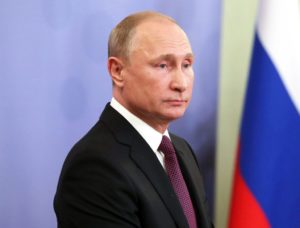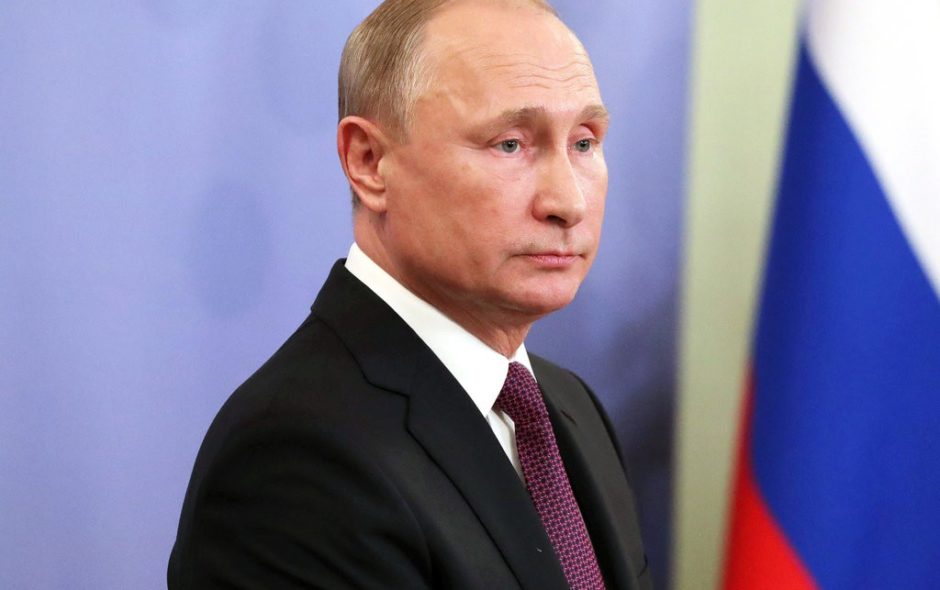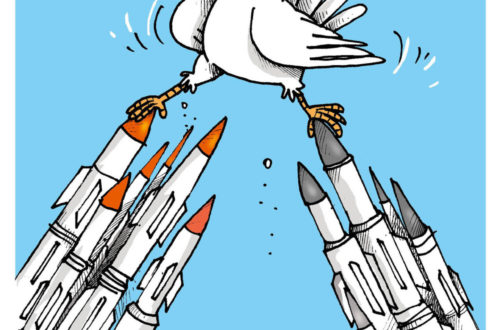A New York Times report is worth publishing here, fellow campaigners. The threat of nuclear accident is far greater than I imagined or understood. Take a look at this:
Cold War Arms Treaty May Unravel, Creating A Much Bigger Problem
By David E. Sanger and William J. Broad

WASHINGTON — After the United States delivered an ultimatum to Russia last week that it was preparing to abandon a landmark weapons treaty, drawing a combative response from President Vladimir V. Putin, the specter of a rekindled nuclear arms race was widely seen as a rewind of the Cold War.
But that encompasses only one slice of the problem — and perhaps the easiest part to manage.
The United States and Russia no longer have a monopoly on the missiles that Ronald Reagan and Mikhail S. Gorbachev agreed in 1987 to ban with the Intermediate-Range Nuclear Forces, or I.N.F., agreement. Today, China relies on similar missiles for 95 percent of its ground-based fleet, and Iran, India, Saudi Arabia, North Korea and Taiwan are among the 10 states with similar, fast-growing arsenals.
In a reflection of the Trump administration’s view of how to navigate a new, more threatening global order, Washington seems uninterested in trying to renegotiate the treaty to embrace all the countries that now possess the weapons, which can carry conventional or atomic warheads. Instead, it is moving to abandon the accord and, with an eye on China, deploy in Asia the sorts of arms it pulled from Europe in the perilous days before the fall of the Berlin Wall.
The administration blames Russian violations — denied by Moscow — for the demise of what until now has been considered one of the most successful of the Cold War arms control agreements. But the bigger issue is that President Trump wants to throw off what he sees as constraints from countering other rising powers, principally China.
Adm. Harry B. Harris Jr., then the commander of United States forces in the Pacific and now ambassador to South Korea, underlined that concern in testimony before Congress last year. “We are being taken to the cleaners by countries that are not signatories,” he said.
The treaty, he said, restricts the United States from building a new class of conventional and nuclear weapons to counter China’s growing influence in the Pacific, while Beijing, the adversary it now worries about the most, faces no such limits.
But the fear among arms control advocates is not just that the I.N.F. treaty will unravel. A much larger one — the New Start agreement, which brought American and Russian nuclear weapons to record-low levels of 1,550 deployed intercontinental ballistic weapons when it went into full effect this year — could also soon collapse. That accord, negotiated by President Barack Obama, expires a month after the next presidential inauguration. On Thursday night, the chairman of the Joint Chiefs of Staff, Joseph F. Dunford Jr., raised doubts for the first time that it would be extended.
“It’d be best if Russia would comply with the I.N.F., which would set the conditions for a broader conversation about other arms control agreements, to include the extension of Start,” he said at an event at The Washington Post. “It’s very difficult for me to envision progress in extending Start II,” he added, misremembering the name of the existing treaty, “if the foundation of that is noncompliance with the I.N.F. treaty.”
The Trump administration said last week that Russia had 60 days to come into compliance with the I.N.F. treaty. After that period, the United States will feel free to “suspend its obligations” under the accord, the American ambassador to Russia, Jon M. Huntsman Jr., said at a briefing for reporters on Thursday.
“Russia must return to full and verifiable compliance, or their failure to do so will result in the demise of the I.N.F. treaty,” he said. “But we should be clear: Russia has not shown any indication so far that it seeks to return to full compliance.”
Yet Mr. Huntsman and Andrea Thompson, the under secretary for arms control and international security, made no mention on Thursday of any plans to amend the treaty to include the host of new players.
In response to the American ultimatum, Mr. Putin, hours before the funeral on Wednesday of George Bush, the American president who dismantled thousands of tactical nuclear weapons that were designed to fight a Soviet invasion, declared that he was ready to retaliate in kind.
“It seems our American partners,” Mr. Putin said, “believe that the situation has changed so much” that the Trump administration now wanted to build its own arsenal of intermediate-range nuclear weapons. “What’s our response?” Mr. Putin asked rhetorically in televised remarks. “It’s simple. In that case, we will also do this.”
Administration officials have said that they see no indication that either side will blink, or even talk to each other, about the implications of an impending reversal. Some officials, speaking on the condition of anonymity, say that the descent into reflexive animosity is the inevitable result of Mr. Putin’s determination to restore his country’s arsenal and Mr. Trump’s paralysis on Russia, since the accusations swirling in the special counsel inquiry raise new suspicions about every conversation or negotiation he enters into with the Kremlin.
The treaty’s origins were rooted in the Soviet deployment in 1977 of a mobile missile called the SS-20, devised to target Europe. Each missile had three nuclear warheads — each of which could be aimed at a different city — and many more missiles of varying ranges emerged. Negotiations started under Jimmy Carter, but gained momentum under Mr. Reagan and Mr. Gorbachev.
When the two leaders signed the I.N.F. treaty in 1987, its scope surprised almost everyone: It banned all land-based missiles with ranges of 500 to 5,500 kilometers, or 310 to 3,420 miles, both nuclear-tipped and conventional. As a result, Washington demolished 846 missiles, and Moscow 1,846 — and Europe breathed a sigh of relief.
At the time of the treaty’s signing, China was barely a consideration. It had a handful of intercontinental missiles that could reach the United States and a few dozen intermediate-range missiles. But in the intervening decades, that changed drastically, as Beijing sought to intimidate Taiwan, exert influence across East Asia and try to keep American ships far from Chinese shores.




